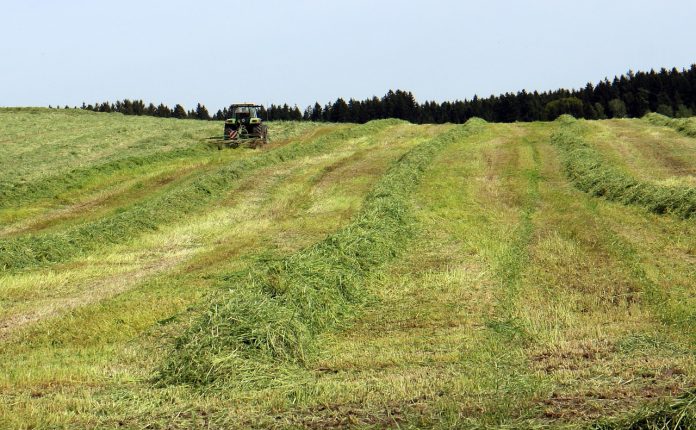Many producers will soon be finishing forage harvesting. This year has been one of many challenges for everyone, although forage harvesting has been the exact opposite from the past two years.
Previously it has been a hay quality issues due to rains and floods, but this year quantity is becoming a concern for some. Several reports have shown that the first cutting was 40-50% of what it should have been. This was more evident in grass forage fields.
Second and third cuttings were better, but having enough hay to get through the winter has many looking for other options. Current pasture conditions are variable across the state due to lack of rain for many, so planning now will get you better prepared for this fall and winter.
Know your inventory
The first step is to take inventory of just how much forage you have. Is what you have going to be enough to feed all of your livestock until next spring? Regardless of how much hay you have or do not have, your forages should be sampled and analyzed. Forage testing laboratories describe the proper sampling techniques for various forages. Contact your local agriculture extension educator for a test probe and instructions for submitting the sample to a laboratory.
Alternatives
If forages are truly in short supply and expensive this fall, there are other options. Depending on prices, it may be cheaper to feed grains or concentrated feeds rather than forages.
Limit feeding is feeding corn and other grains as an energy source. Using this system, you only feed enough of the grains/supplement to meet the animals’ requirements to maintain body condition and keep the program cost effective.
A study was conducted at Ohio State University in 1996 using 71 beef cows in a limit-feeding study. One group of cows were feed 10 pounds of corn, 2.6 pounds of pelleted supplement and 2.6 pounds of hay. In this group, corn was increased to 11.9 pounds of corn from January to April to meet energy requirements. The other group was fed first cutting rounds bales free choice.
The results of this study resulted total feed cost per day was $0.77 group one and $1.50 for the second. However, the downside to limit feeding in this study was that the cows who were limit fed did eat the bark off the trees in the 5-acre paddock. Personal conversation with the researchers showed that the cows also worked over any boards they could reach.
The cows were fed enough to meet the nutritional requirements and no negative performance effects noted. Increased hay would make the animals more content, but also increase feed costs.
Other sources
Grain usually contains a readily available starch. Grain sugar and starch ferments rapidly in the rumen and may lower rumen pH, resulting in reduced feed intake and digestibility of forages. Certain feeds such as soybean hulls, corn gluten feed, beet pulp and brewers grains are satisfactory energy sources, but the starch is more slowly degraded and does not alter rumen pH to the same degree as grain sources such as corn.
Be sure to understand the effects of any feeds being used and adjust the entire ration correctly. Feed by-products rarely can be used as the only single ingredient.
Cautions
Great caution should be taken if you plan to use grains or concentrated supplements in a limit feeding. In the previous study, the animals on the restricted diet were fed at the same time each day to prevent acidosis. Fiber is an important factor to keep the rumen functioning properly, and you need to adjust ruminants slowly in a limit feeding program. Acidosis, bloat and founder can all result with high grain diets.
Summary
Limit feeding does increase management and animal husbandry skills. Grazing is the most economical way to feed livestock, so hopefully the weather will permit us to extend the time livestock are in the pastures this fall. This has certainly been a unique year, and I do hope we do not need to struggle this winter keeping livestock fed.
All the Ohio State University Extension offices are still open; we are working full time with limited hours in the office. We can be reached by phone or email and are available for farm visits and one on one assistance.













